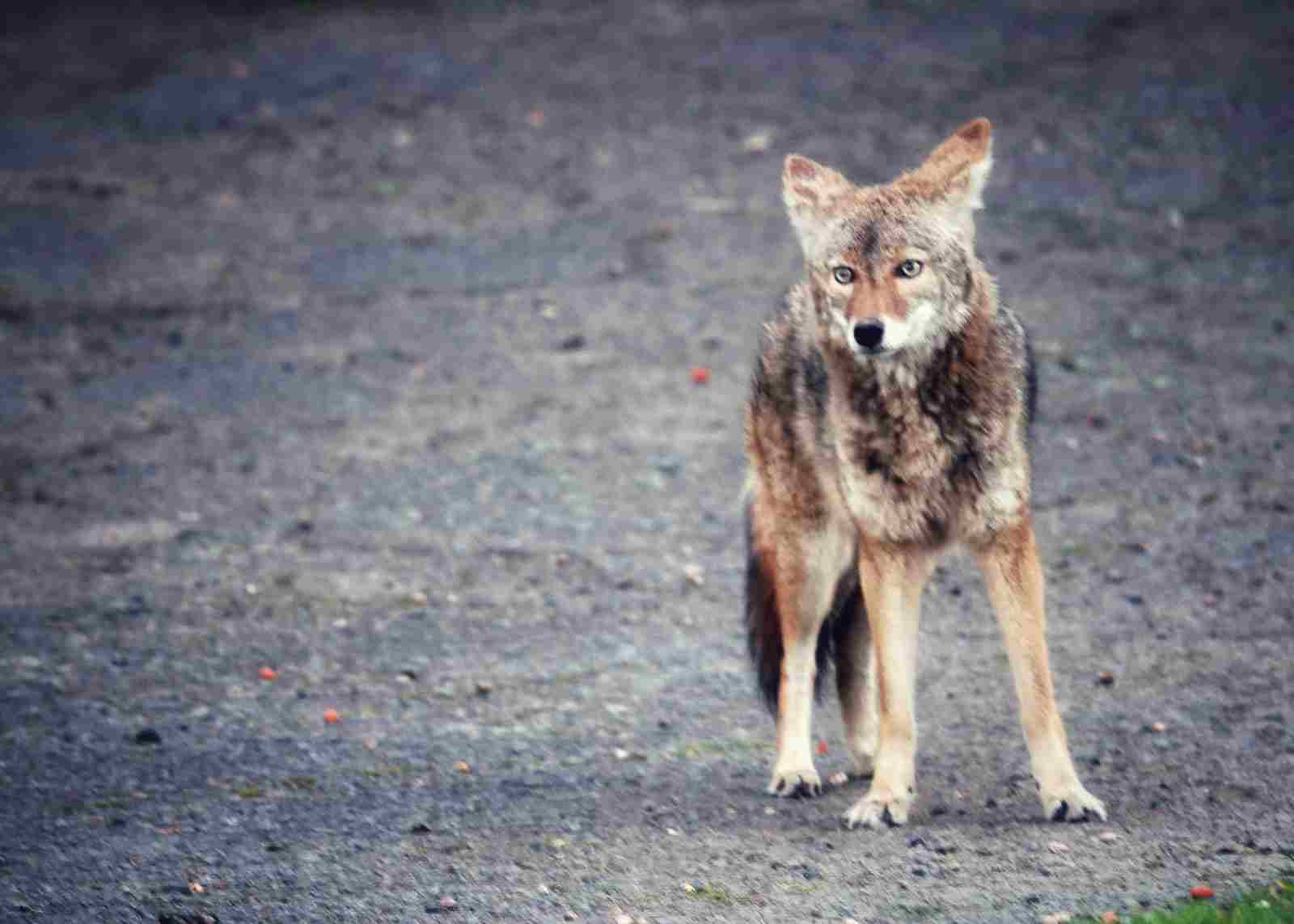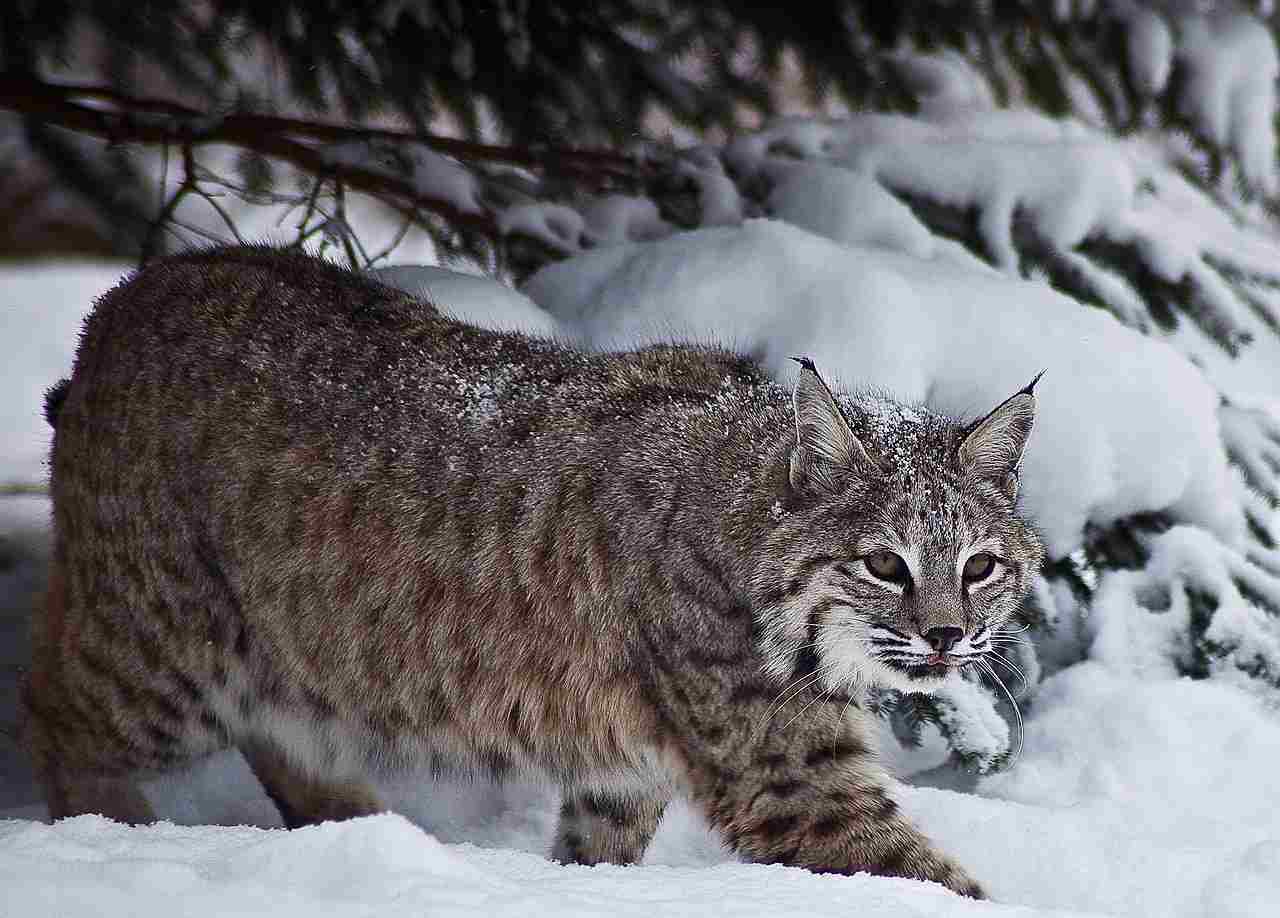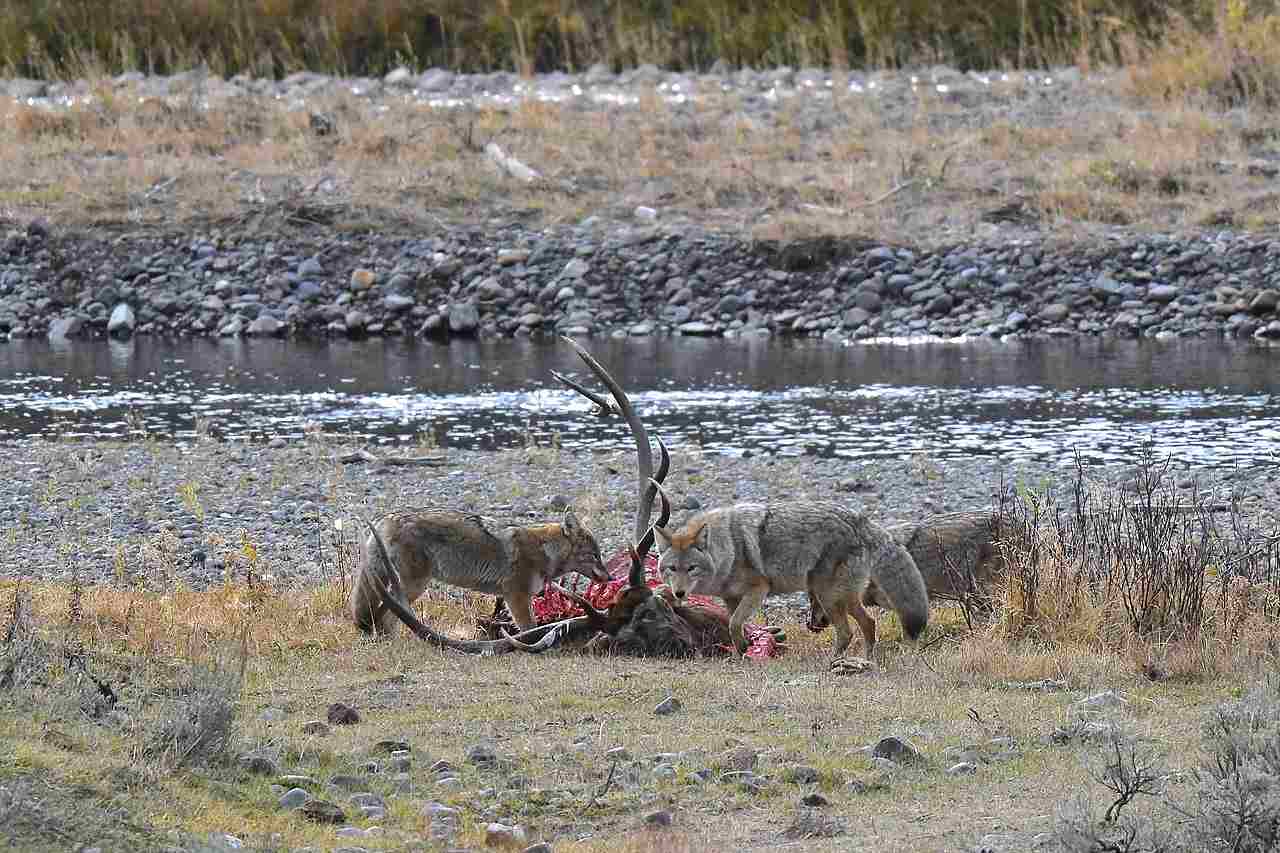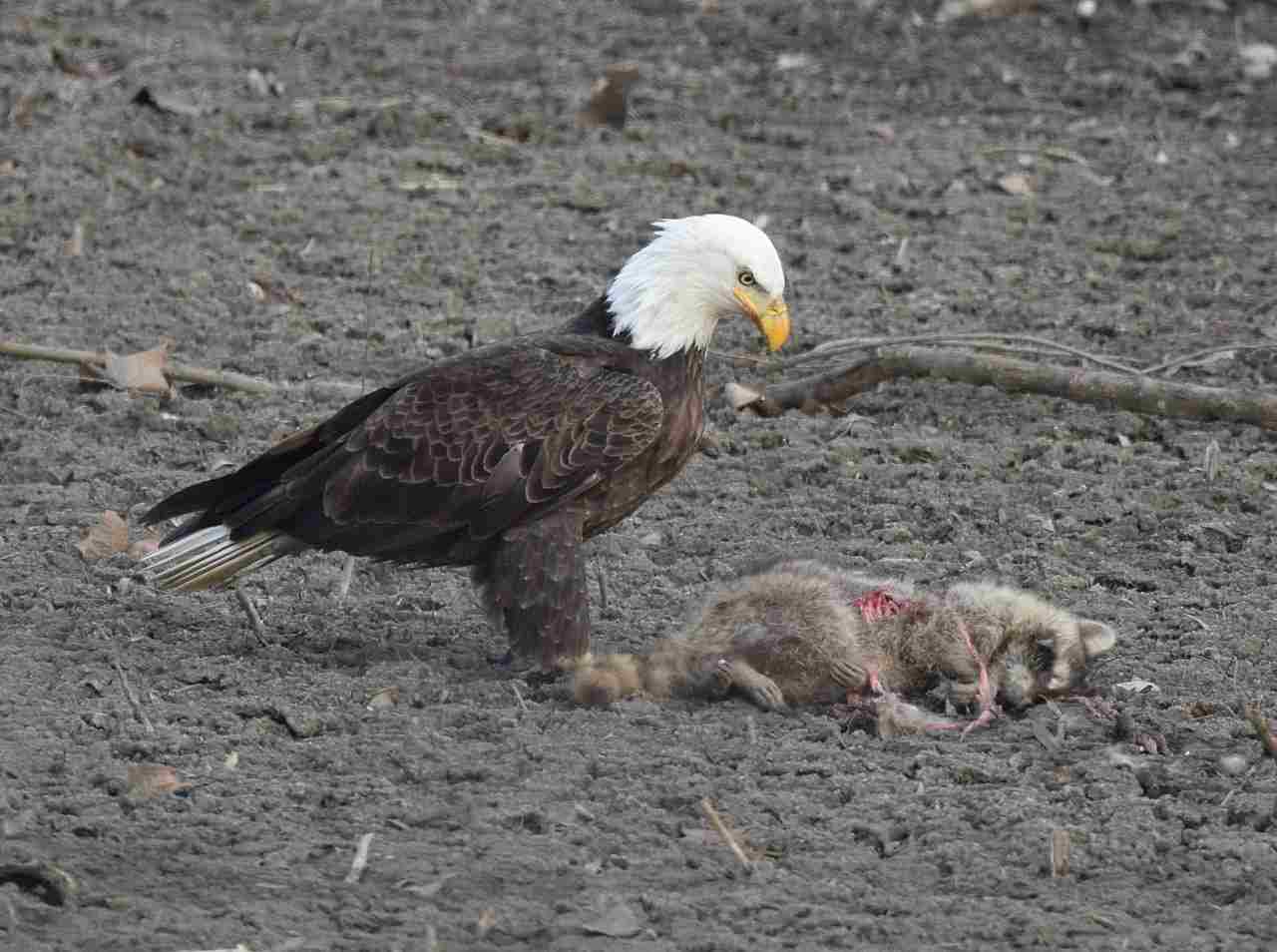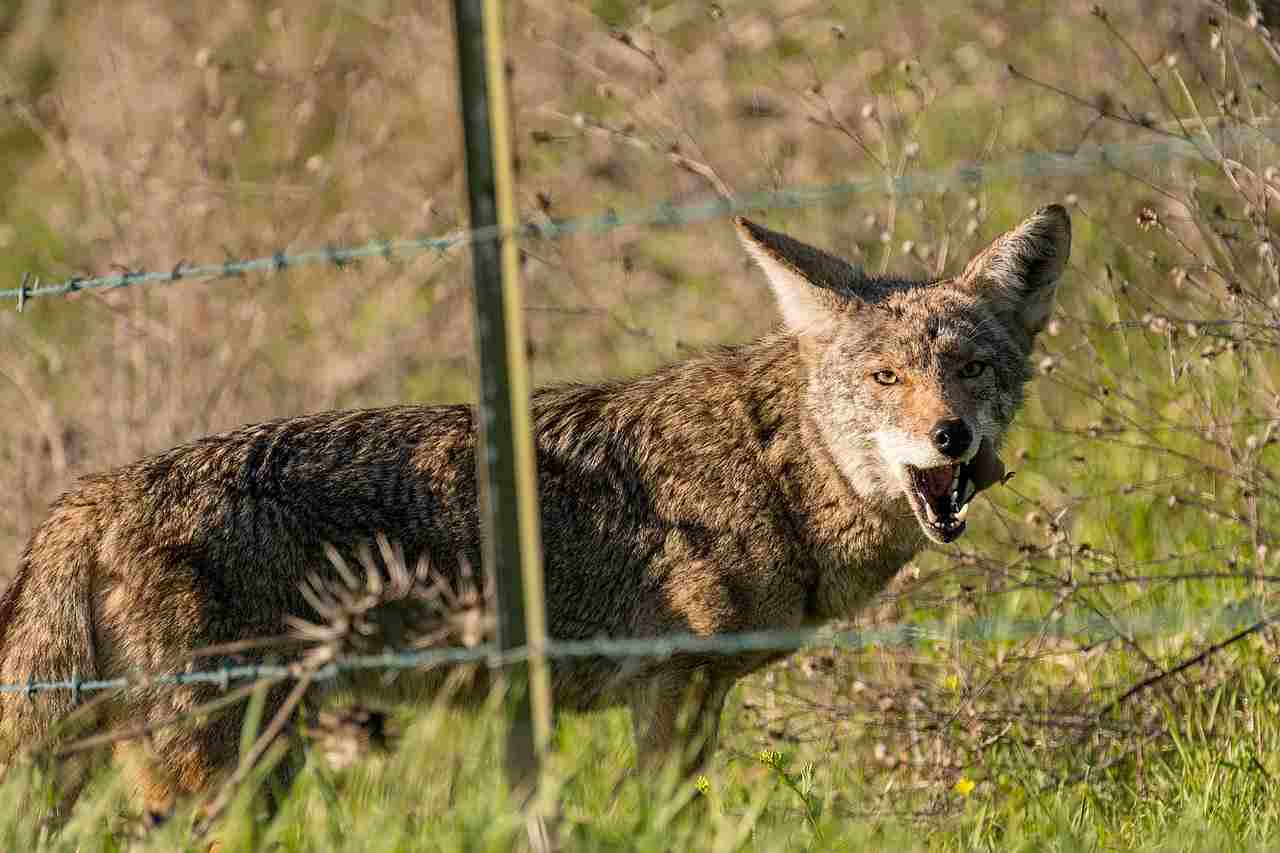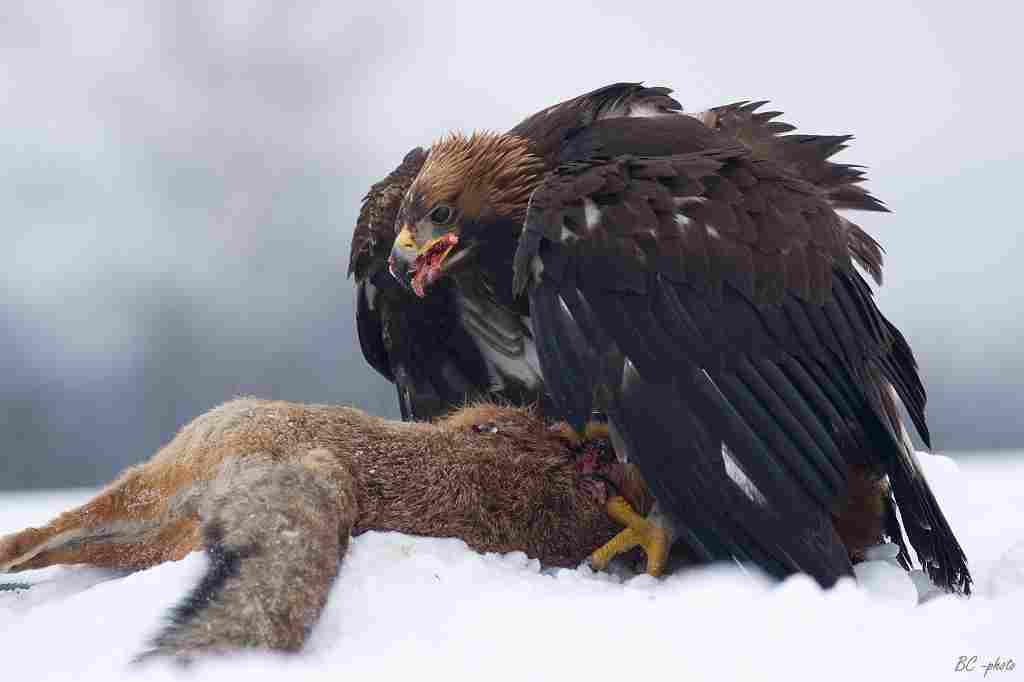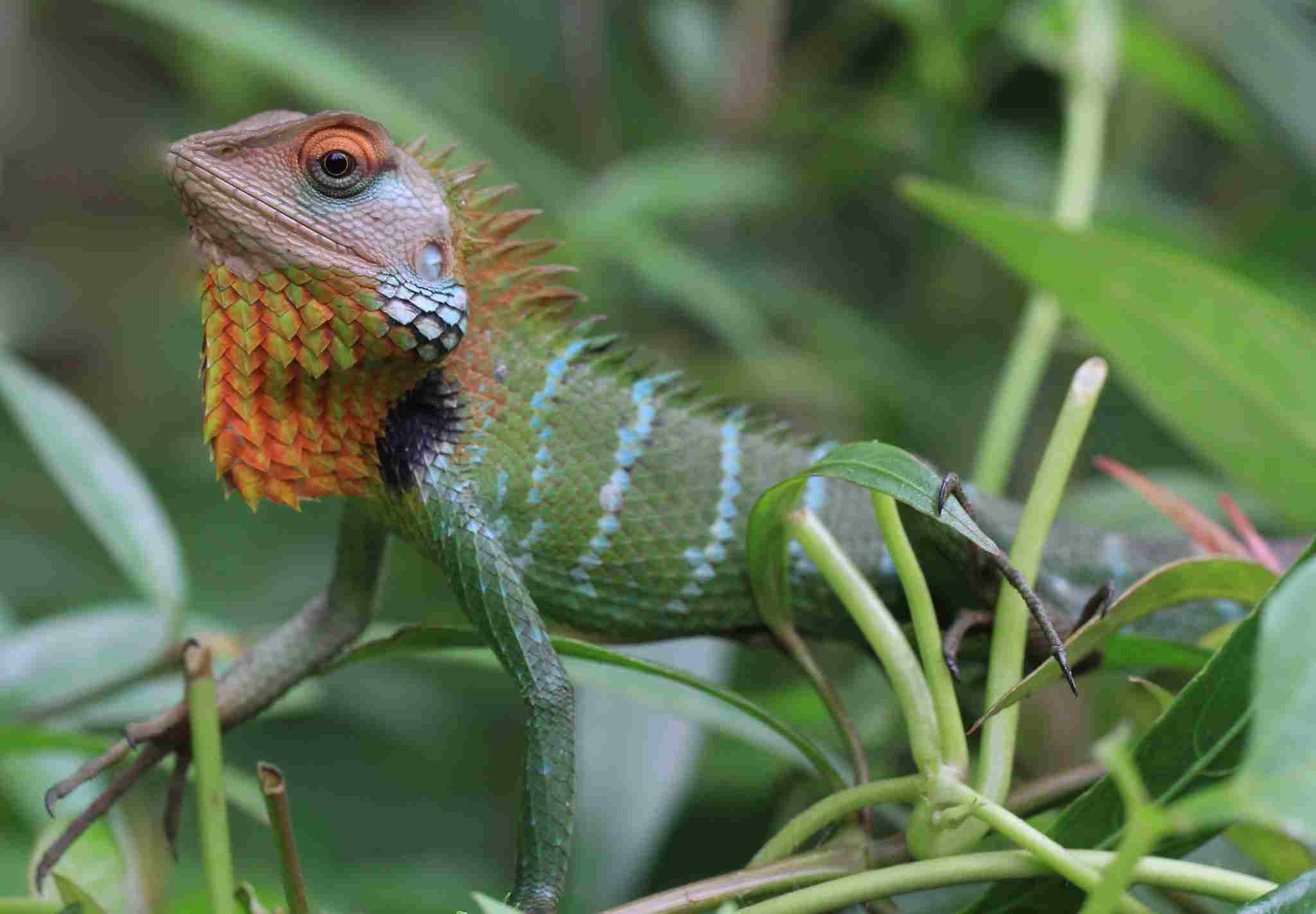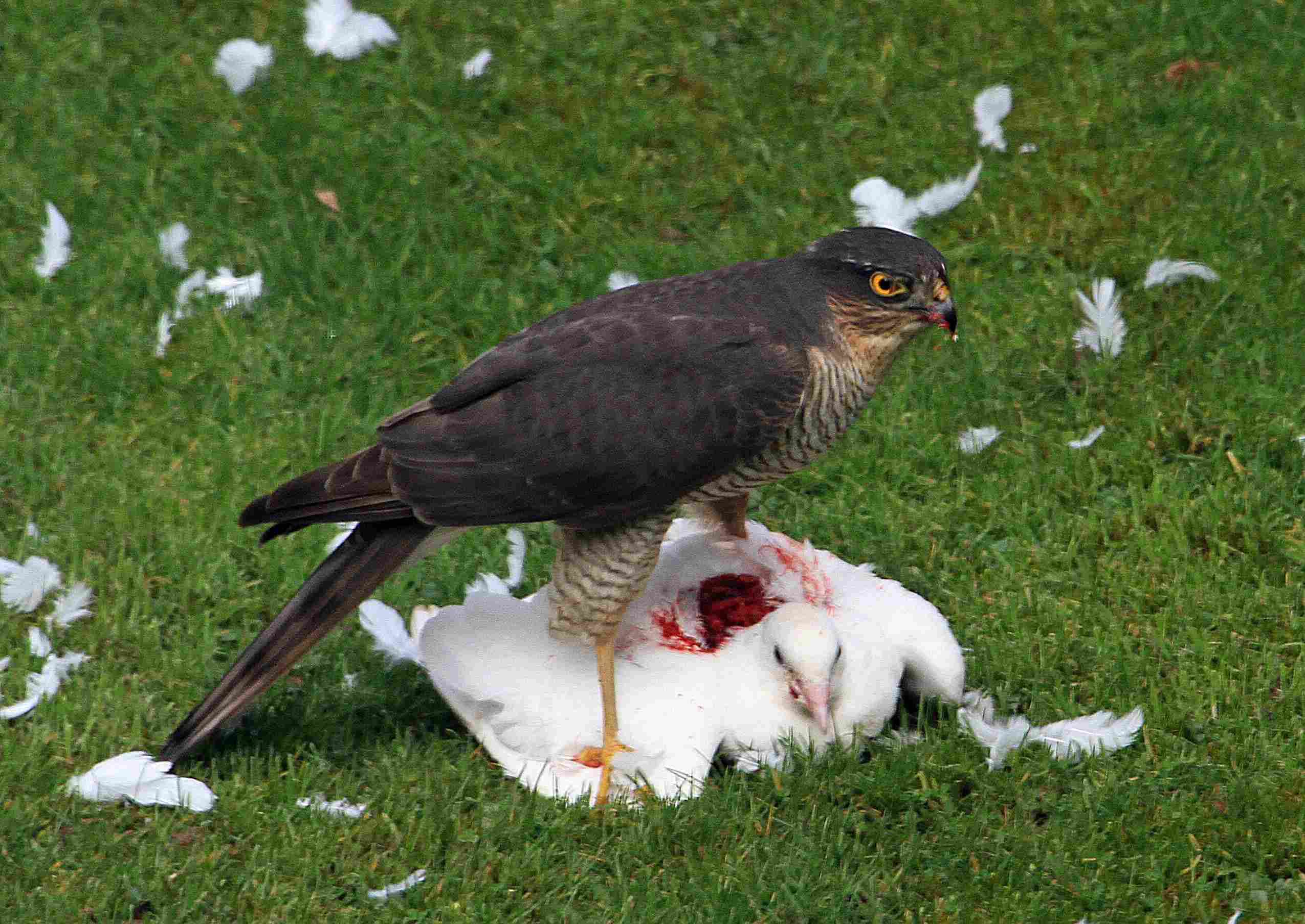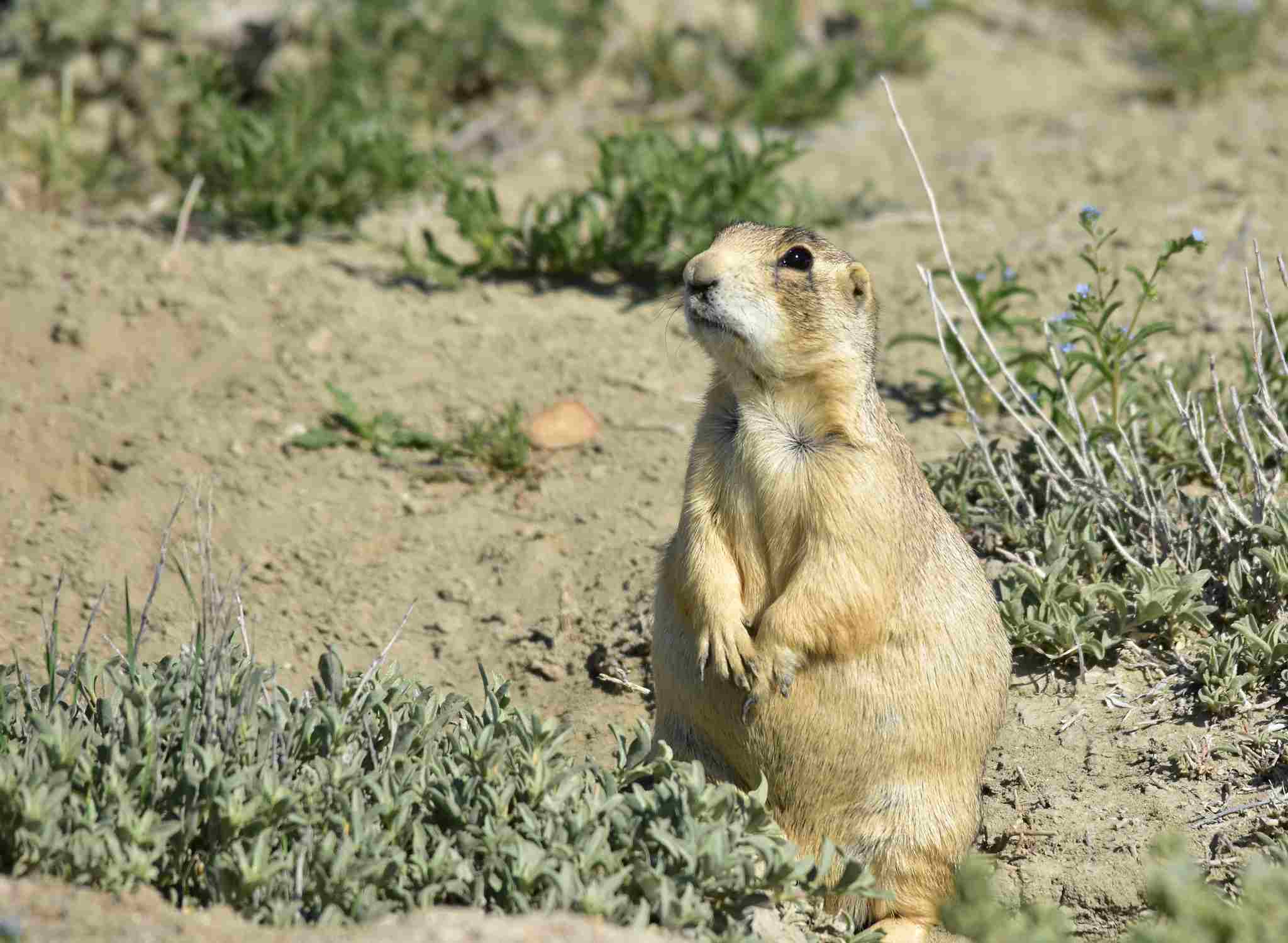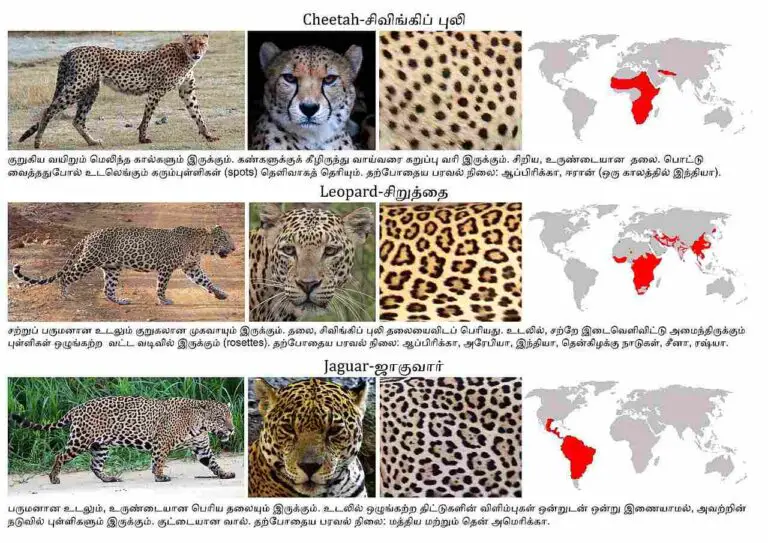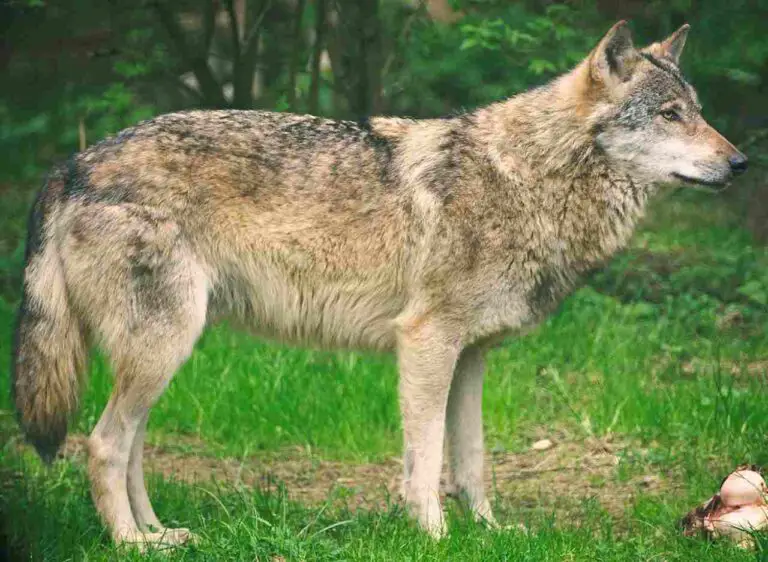9+ Top Predators In The Desert Ecosystem Discussed
Examples of top predators in the desert ecosystem are cougars, bobcats, and coyotes, each with unique adaptations for hunting and surviving in arid environments. Cobras and horned vipers are venomous snakes that use their venom to subdue prey quickly. Eagles and desert hawks are birds of prey that use their keen eyesight to hunt small mammals and reptiles. Dingoes and African wild dogs are social canines that often hunt in packs, while the diamondback rattlesnake is known for its distinctive rattle and venomous bite. Each of these predators plays a crucial role in maintaining ecological balance in their respective desert ecosystems.
1. Cougar
The cougar, also known as the mountain lion or puma, is a versatile and powerful predator found in desert ecosystems throughout North America. Despite being more commonly associated with mountainous regions, cougars are well-adapted to desert environments, where they prey on a variety of animals, from deer and rabbits to smaller mammals. These solitary creatures are skilled hunters, relying on their stealth, speed, and powerful hind legs to ambush prey. In desert areas, they often seek out shaded spots and water sources, which are critical for their survival in harsh climates.
Cougars play a crucial role in maintaining the ecological balance in desert ecosystems. By controlling prey populations, they help to prevent overgrazing and maintain a healthy environment for other species. These large cats are highly territorial, often occupying large expanses of land. This territorial behavior contributes to their elusive nature, making sightings in desert regions relatively rare. However, their presence is a key indicator of a healthy ecosystem, demonstrating the interconnectedness of predators and their prey in desert landscapes.
2. Bobcat
Bobcats are small but formidable predators that inhabit a wide range of environments, including desert ecosystems across North America. Known for their distinctive tufts of fur on their ears and short, bobbed tails, bobcats are adept hunters, preying on rabbits, birds, and small mammals. Their adaptability allows them to thrive in arid regions, where they use their keen senses to locate prey. Despite their small size, bobcats are agile and strong, capable of taking down animals larger than themselves when necessary.
In desert landscapes, bobcats often seek shelter in rocky crevices or dense vegetation to escape the harsh sun and heat. This behavior also provides them with concealed locations from which to ambush prey. As largely solitary animals, bobcats are known to mark their territory with scent markings and vocalizations. Their presence in the desert contributes to the control of smaller mammal populations, thereby maintaining a balance within the ecosystem. As human development encroaches on their habitats, bobcats have also shown a remarkable ability to adapt to urban environments, though this brings new challenges for both the predators and local human communities.
3. Coyote
Coyotes are among the most adaptable predators in the desert ecosystem, with a range that extends across North America. These highly intelligent and resourceful animals can thrive in diverse habitats, including deserts, forests, and even urban areas. In the desert, coyotes primarily prey on small mammals like rabbits and rodents, but they are also known to scavenge and occasionally hunt larger prey, such as deer. Their flexible diet and opportunistic behavior make them well-suited to the unpredictable conditions of the desert.
Coyotes are social animals, often living in family groups or small packs. This social structure helps them coordinate hunting efforts and defend territory. In desert environments, coyotes are active during the cooler hours of dawn and dusk, avoiding the intense midday heat. Their adaptability extends to their vocalizations, with a range of howls, barks, and yips that serve to communicate with other coyotes and establish territory. Despite their adaptability, coyotes face threats from habitat loss and human encroachment, which can lead to increased conflicts with humans and domestic animals.
4. Cobra
Cobras are venomous snakes that inhabit various regions, including desert ecosystems in parts of Africa and Asia. Known for their iconic hoods and aggressive defensive displays, cobras are skilled predators that primarily feed on rodents, birds, and other small animals. In desert environments, cobras typically rely on their venom to immobilize and kill their prey quickly. They are often found near water sources and rocky outcrops, where they can hunt and seek shelter from the harsh sun.
Cobras are solitary by nature and tend to avoid human contact. However, they can become aggressive when threatened, using their hoods to appear larger and more intimidating. In desert ecosystems, cobras play an important role in controlling rodent populations, which helps maintain a balanced food web. Despite their fearsome reputation, cobras generally only attack humans in self-defense. Conservation efforts focus on educating local populations about safe practices to avoid confrontations, as well as preserving the natural habitats that support these fascinating predators.
5. Eagle
Eagles are majestic birds of prey that can be found in desert ecosystems across the globe. These powerful raptors are known for their keen eyesight, strong talons, and impressive wingspans. In desert environments, eagles typically hunt during the cooler parts of the day, using their sharp vision to spot prey from great distances. They primarily feed on small mammals, reptiles, and birds, though some eagles are opportunistic and may scavenge if food is scarce.
In desert ecosystems, eagles play a crucial role in controlling populations of smaller animals, helping to maintain ecological balance. Their nests, often built on high cliffs or tall trees, offer a strategic vantage point for hunting and provide safety from ground-based predators. Eagles are generally solitary or found in mated pairs, with some species engaging in elaborate courtship displays. Conservation efforts aim to protect eagle habitats from human encroachment and pollution, ensuring these top predators continue to soar above desert landscapes for generations to come.
6. Horned Viper
The horned viper is a distinctive desert predator found in arid regions across North Africa and the Middle East. Known for the prominent horn-like scales above their eyes, these venomous snakes are well-adapted to the harsh conditions of desert environments. They primarily prey on small mammals and reptiles, using their venom to quickly subdue their victims. The horned viper’s unique appearance helps it blend into sandy and rocky landscapes, allowing it to ambush prey with ease.
In desert ecosystems, horned vipers play an important role in regulating populations of small mammals, contributing to the ecological balance. They are typically most active at night, avoiding the intense heat of the day. The snake’s distinctive locomotion, known as sidewinding, allows it to move efficiently across loose sand without sinking. Despite their venomous nature, horned vipers are generally not aggressive toward humans unless provoked, and incidents are relatively rare. Conservation efforts focus on protecting their habitats from human encroachment and ensuring the continued survival of this unique desert predator.
7. Dingo
The dingo is a wild canine native to Australia, where it occupies a variety of habitats, including desert ecosystems. As one of the continent’s top predators, dingoes play a critical role in maintaining ecological balance by controlling populations of prey animals such as rabbits, rodents, and even kangaroos. In desert regions, dingoes are highly adaptable, often forming packs to hunt cooperatively and defend territory. This social structure helps them thrive in the challenging conditions of the desert.
Dingoes are known for their unique vocalizations, which include howls, barks, and growls, used to communicate within packs and establish territory. They are generally more active during the cooler hours of dawn and dusk, avoiding the intense heat of the day. Despite their critical role in the ecosystem, dingoes face threats from human encroachment, habitat loss, and conflicts with livestock farmers. Conservation efforts focus on finding a balance between protecting dingoes and addressing the concerns of local communities, ensuring the continued survival of these iconic desert predators.
8. African Wild Dog
African wild dogs, also known as painted dogs or hunting dogs, are highly social predators found in various regions across Africa, including desert ecosystems. Known for their striking coat patterns and large, rounded ears, African wild dogs are highly efficient hunters, often forming large packs to coordinate hunts and share responsibilities. In desert environments, they rely on their teamwork and speed to bring down prey, typically focusing on antelopes and other ungulates.
These wild dogs play a crucial role in maintaining the balance of desert ecosystems by controlling herbivore populations, which helps prevent overgrazing and supports vegetation growth. Their pack structure is unique among canids, with a strong emphasis on social bonds and cooperative behavior. Despite their adaptability, African wild dogs face significant threats from habitat loss, human-wildlife conflicts, and diseases like canine distemper. Conservation efforts aim to protect their habitats and mitigate conflicts with local communities, ensuring the survival of these remarkable desert predators.
9. Diamondback Rattlesnake
The diamondback rattlesnake is a venomous snake found in desert regions across North America, particularly in the southwestern United States and northern Mexico. Known for its distinctive rattle and diamond-shaped patterns on its scales, this rattlesnake is a formidable predator, primarily feeding on small mammals and birds. Its venomous bite allows it to quickly subdue prey, while its rattle serves as a warning to potential threats, indicating that it prefers to avoid confrontation when possible.
In desert ecosystems, diamondback rattlesnakes play an essential role in controlling rodent populations, helping to maintain a balanced food web. They are typically most active during the cooler parts of the day, seeking shelter in burrows or under rocks during the hottest hours. Despite their fearsome reputation, diamondback rattlesnakes are generally not aggressive toward humans unless threatened. Conservation efforts focus on educating people about safety practices to reduce snake-human conflicts and protect the natural habitats of these fascinating desert predators.
10. Desert Hawk
The desert hawk, a broad term often used to refer to various species of hawks found in desert regions, is a skilled predator known for its agility and keen eyesight. These raptors typically hunt during the cooler parts of the day, using their sharp vision to spot prey from high in the sky. In desert ecosystems, desert hawks feed on small mammals, reptiles, and other birds, using their powerful talons to capture and kill their prey. Their adaptability allows them to thrive in the harsh conditions of desert environments.
Desert hawks play a vital role in maintaining the balance of desert ecosystems by controlling populations of smaller animals. They often build nests on high cliffs or tall trees, providing a strategic vantage point for hunting and a safe environment for raising their young. Despite their adaptability, desert hawks face threats from habitat loss and human encroachment, which can impact their nesting sites and food sources. Conservation efforts focus on preserving their habitats and promoting awareness of their role in the ecosystem, ensuring these majestic birds continue to soar above desert landscapes.
*Summary
-
Cougar:
-
Large, solitary cat.
-
Preys on deer, rabbits, and smaller mammals.
-
Maintains ecological balance by controlling prey populations.
-
-
Bobcat:
-
Smaller predator with tufts on ears and a bobbed tail.
-
Preys on rabbits, birds, and small mammals.
-
Uses stealth and agility in desert environments.
-
-
Coyote:
-
Adaptable and resourceful predator.
-
Preys on small mammals, sometimes larger ones.
-
Lives in family groups or small packs, often active at dusk and dawn.
-
-
Cobra:
-
Venomous snake with iconic hood.
-
Preys on rodents, birds, and other small animals.
-
Generally solitary, known for aggressive defensive displays.
-
-
Eagle:
-
Majestic bird of prey with a large wingspan.
-
Hunts small mammals, reptiles, and birds.
-
Contributes to ecological balance by controlling smaller animal populations.
-
-
Horned Viper:
-
Venomous snake with horn-like scales above its eyes.
-
Feeds on small mammals and reptiles.
-
Uses sidewinding locomotion to navigate desert landscapes.
-
-
Dingo:
-
Wild canine native to Australia.
-
Preys on rabbits, rodents, and kangaroos.
-
Known for social pack structure and adaptability in desert conditions.
-
-
African Wild Dog:
-
Social predator with striking coat patterns.
-
Hunts cooperatively in large packs, focusing on antelopes and other ungulates.
-
Plays a critical role in maintaining ecological balance.
-
-
Diamondback Rattlesnake:
-
Venomous snake with a rattle and distinctive diamond patterns.
-
Primarily feeds on small mammals and birds.
-
Uses its rattle as a warning signal, generally avoids confrontation.
-
-
Desert Hawk:
-
Broad term for various species of hawks found in desert regions.
-
Preys on small mammals, reptiles, and birds.
-
Builds nests on high cliffs or tall trees, plays a key role in the ecosystem.
-
| Predator | Description |
| Cougar |
Large, solitary cat; preys on deer and smaller mammals.
|
| Bobcat |
Smaller predator with tufts on ears; agile and stealthy.
|
| Coyote |
Resourceful predator; lives in family groups or small packs.
|
| Cobra |
Venomous snake; iconic hood; preys on rodents and small animals.
|
| Eagle |
Large bird of prey; hunts small mammals and reptiles.
|
| Horned Viper |
Venomous snake; horn-like scales; uses sidewinding movement.
|
| Dingo |
Wild canine; hunts in social packs; preys on rabbits and kangaroos.
|
| African Wild Dog |
Social predator; hunts cooperatively; focuses on antelopes.
|
| Diamondback Rattlesnake |
Venomous snake; rattle; feeds on small mammals.
|
| Desert Hawk |
Various species; preys on small mammals and reptiles.
|
